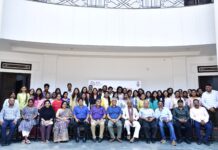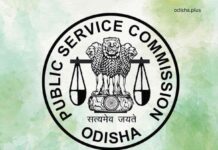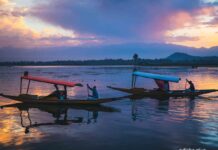Charudutta Panigrahi

Parents prefer to take children to malls and not to public parks. A culture that is keeping kids from exercising their right to play seems to be spreading. Those of us who get wistful on WhatsApp postings on childhood memories of afternoons spent kicking a ball in the dusty streets, calling for neighborhood friends to join us in not-so-manicured playgrounds, the pranky thrills of wild push-and-run, have not cared to leave any public space for our children. Children’s right to play has been severely belittled and slayed. Children playing outside in the streets has almost disappeared, except for slums. We haven’t been able to imagine streets for anything other than traffic. Sporadic Rahagiri programs in tonier locations and one-off glitzy programs won’t help sensitise the city dwellers and change their behaviours about usage of public spaces.
Our children now in Bhubaneswar occupy an ever-shrinking chunk of public space, and their time playing out in our streets has been reduced to nothing. School grounds have reduced in size, except for the elite, private schools. Immunity among children is reducing. The number of autoimmune diseases is on the increase across the city. Children are exposed to far fewer microbes than in the past. So, their immune systems don’t get challenged or doesn’t fight back efficiently. Asthma, vitiligo, eye &skin diseases are on the rise. Children who are exposed to natural environment help their immune systems and are less likely to be affected by autoimmune disorders. Children are getting more and more individualistic and self centred, whole time captivated to their screens. They aren’t able to develop skills through play, nor do they cultivate social skills. The gross motor skills are waning, and children are getting weaker.
When families shifted from Cuttack or Brahmapur or Sambalpur to Bhubaneswar even in early 90’s were happy because there was space in the city. There were hardly any condominiums but there were parks, and the streets were breathing. It started as a town of government colonies but it now headquarters India’s natural resources business, is a Hub of global sports, an Education Centre of India, an emerging axis of international tourism. It still continues to be the biggest settlement for Odias from all the districts of Odisha and rooted NROs.
The state population is over 4.37 Crore. In the next 15 years, it is expected that more than 17 percent of the internally migrating population (from the districts) would be in cities (or city bound), out of which Bhubaneswar is estimated to attract 80 percent of this migration. The city is already bursting at its seams now. By 2030, Bhubaneswar would also house the stakeholders of the great India growth story because it will be the Capital of “capital”.
Odisha is the upcoming “State of Dreams”. This is where a fistful of soil gives supernormal profits. But what about the children of the city? They need space to nurture their dreams.
550 slums in Bhubaneswar fall under 67 wards and the state aims to have one model slum in each ward. But not all 550 slums are authorized. The Model slum, per design, will have makeover in road, sewerage, household latrine, drinking water, power supply, streetlight. But the announcement lays out that children’s play area, open space development and community centre will be added as components depending on the availability of space. This is where civil society wokery is necessary. Can the slum children have access to the public parks in Bhubaneswar? This is what access and equity is about, other than being overused as jargons. The barrier comes down and all the kids just run out. All the kids, in their ensemble, will know their neighbours, be together, tap into each other when required and develop a harmonious locality. I have grown up in a similar manner in Cuttack and it has helped shape characters.
If all the space is given to high rises, where would space appear for the communities? Can we not earmark areas for the open space, children play parcels? Can we someday muster the temerity to stop adding to the city’s want on growth and wolfish buildings, at least interim, till we figure out what to do with the rapacious expansion we have allowed so far? Can Bhubaneswar stop for a while, take a breath, look back, assess the miles covered and then take an informed decision for the next steps?
Almost all the public servants who retire, settle in Bhubaneswar and the number of residents directly connected (or formerly connected) should be in the range of 26-27000. They know the system, they can influence their co-Bhubaneswariyas, can find solutions to many day-to-day city life problems, can motivate youngsters to pioneer self-service, encourage many youngsters who are currently exploring technology solutions to civic issues and above all can earn recognition for themselves. At least for the lure of self-glory.
The disappearance of children from the parks and the street is a vicious circle. Sadly, if you see kids on their own, our conclusion is “it’s neglect”. Kids on the street are seen as a threat to adults, rather than being ‘our’ children, the children of the whole community. Free play is almost finished. School is instruction games and less of free play. Free play should be encouraged as an activity that takes place without any expectations or outcomes. Just like that (JLT). We should learn how to leave the children alone. Smaller towns still have the free play culture but fast dwindling. Screens have played havoc with kids’ health, strength & character.
Let’s have the courage to reorient our planning systems. We are unwisely geared around cars, housebuilding and the economy. The basics, Environment, health and quality of life, should be the principal drivers. An open space in a city park forest can be converted into a nature playground. Their energy requires the biodiversity of wild space, trees, insects, water and unbridled freedom to be their own. The proposed Anandaban urban forest on a90-acre land patch is a commendable initiative. But what about the Parks in the city or the greater Bhubaneswar area?
BDA is in charge of 70 parks in the city and all together that is about 245.19 acres of area. Smart City proposal is developing Smart Parks. BDA is also developing about 32 parks (mostly in the wards) with children-specific amenities and games facilities. But how will the children access the parks if the parents don’t stop taking them to malls which are easier for them to go. Parking of vehicles, sanitation & hygiene, safety is not a challenge. The housekeeping is not a problem. Parks need to be made safe, clean and accessible. Unused or less used parks had become dens for ruffians, but things have improved now. The management of the parks should be privatized and strictly handled.
There is a critical intersection of public spaces, climate change, and air quality concerning the well-being of young children and their caregivers. We the civil society of Bhubaneswar need to facilitate discussions, share insights, and develop strategies to mitigate the impact of climate change (Bhubaneswar is highly vulnerable) and worsening air quality on young children and their caregivers.
In the forthcoming summers, the Parks in Bhubaneswar can have temporary installations water fountains/water streams with family picnic tables, beach umbrellas, functional and clean toilets with accessibility ramps. Our parks need to be disability friendly. The use of parks by people with special needs and informal workers is overseen and not considered a significant factor for the development of the parks. This creates unequal access.
People flocking to Parks which are bright areas, well-lit and well maintained help develop a strong bond among the city citizens. It tightens the neighborhood bonding. Children can bring families together. The socialising opportunities in Bhubaneswar, required for all ages, will increase.
A city mayor once said: “Children are a kind of indicator species. If we can build a successful city for children, we will have a successful city for everyone.”
(Charudutta Panigrahi is an author and a social advocate)





















